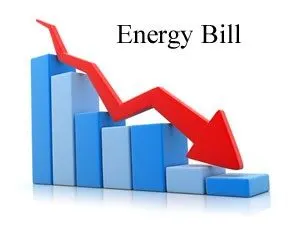Solar has been at the forefront of the “clean energy” revolution that has slowly unfolded over the past decade. In 2019, the Solar Energy Industry Association (SEIA) and Wood Mackenzie Power & Renewables announced that there were well over 2 million solar installations in the United States. They then predicted that there would be 3 million solar installations in the country by the end of 2021.
Since we’re on track to surpass that number, solar energy is the fastest-growing alternative energy sources in the country.
So, what’s the hype about, and should you jump on the bandwagon, which is also, hopefully, solar-powered? Yes, you should. But to better answer those questions, let’s take a look at the top benefits of switching to solar energy.
What Are The Advantages Of Solar Energy (And To The Environment)?
- Reduces Your Electricity Bills
- Earns You Tax Credits and Rebates
- Return on Investment
- Energy Independence
- Improves The Value of Your Home
- It’s Readily Available
- It’s a Clean Source of Renewable Energy
1. Reduces your electricity bills
If you’ve had a solar salesman knock on your door, you’ll know what I’m talking about. But this time, you’re hearing it without the eager tone that’s almost always fueled by the promise of a commission. Solar does save you money.

The most obvious cost-friendly benefit is that you won’t use as much grid electricity as you previously did. You’ll be drawing a significant portion of your energy usage from your solar panels. And if it’s coming from panels you own, it’s practically free. This has the effect of lowering your monthly utility bills.
Net metering is another way solar energy saves you money. Homeowners whose panels produce more electricity than they consume sell the surplus to the grid. The value of the energy sold is then credited to their electricity bill at the end of the month.
Even better, it’s still possible to save without owning a single solar panel. How? Enter the community solar. Participants of these innovative projects are entitled to a particular share of a solar farm’s total electric out either by ownership or subscription. How do they save?
Those who own a share of the project enjoy the benefits as any other solar owner would, except there are no panels installed in their homes and businesses. On the other hand, subscribers don’t own any part of the project. Instead, they pay a monthly subscription fee that buys solar electricity from the community solar farm at a cheaper price per kWh than they do from their utility.
Since no panels are physically present at your home, all these benefits will be transferred to you through Remote Net Metering/ Virtual Net Metering.
2. Earns you tax credits and rebates
The federal government offers several incentives to encourage people to buy solar panels. One of these is the federal residential solar energy credit. Under this deal, you get 26% of the total cost of buying and installing your panel system as a federal income tax credit when you file your taxes.

For instance, if a solar system is worth $20,000, you will pay $3000 less income tax. You may not be receiving the money in cash, but paying that much less in taxes is a steal.
This tax credit won’t be around forever, though. It will be reduced to 22% in 2023 and then expire starting 2024 unless Congress decides to renew it.
Also, the energy department lays out the following conditions for one to be eligible for the federal tax credit;
- You own the solar PV system.
- The solar PV system must be located at your primary or secondary residence in the United States.
- If it’s an off-site community solar program, the electricity generated is credited against and does not exceed your home’s power consumption.
- The solar system is either new or being used for the first time.
Depending on your state regulations and utility provider, you may also receive rebates after installing a solar PV system. For example, some utilities provide subsidies of over 1000 dollars to homeowners who want to buy solar panels.
3. Return on investment
Solar panels are a long-term investment made to last for the next 25 to 30 years. The low maintenance costs, cheaper cost of solar electricity, federal tax credits, and local rebates mean that many who invest in solar panels enjoy a significant return on their investment.

It takes the average home around 7 to 8 years of solar savings to earn back 15,000 dollars spent on a solar panel system. However, the amount in savings and the repayment period depends on a couple of key factors. These include the size of the solar systems, total electricity consumption, local electricity rates, average daily hours of direct sunlight, and average sunlight intensity.
4. Energy independence
If you have a solar panel system installed, it’s safe to say that you own a mini power plant with a virtually inexhaustible fuel source. And since you’ll be producing your own electricity, you rely less on the grid and will be partially shielded from the rising energy costs and frequent fluctuations in power supply.

Why is this important?
Over the past decade, the cost of electricity has risen by over 5 percent. Unfortunately, the average consumer has no control over this trend, and it’s expected to continue over the coming years.
On the other hand, the cost of solar energy has decreased by more than 70% over the same period, and it’s getting cheaper as the technology gets better.
Therefore, the less connected you are to the grid, the further away you’ll be from the increasing energy bills.
Of all the pros and cons of solar energy, personal independence from the grid is the best thing about investing in a solar panel system.
5. Improves the value of your home
Growing public interest in solar power and other clean energy sources means that the average American is willing to pay more when buying a home with a solar panel system installed. However, you may have heard that it’s unwise to install a solar panel if you’re planning to move out sometime soon. While this is mostly true, it may work out to your benefit if you’ll be selling your home before moving out.
A study by the shows that buyers are willing to pay as much as $15,000 in premium for a home with solar panels. If you’re one lucky seller, that’s enough money to grant you an instant return on your investment.
6. It’s readily available
One of the biggest contributors to the growing popularity of solar energy is its availability. Unless you live in the poles, you probably receive a fair amount of sunlight for, at least, a considerable portion of the year. And where there’s sunlight, there’s solar energy.
The presence of relatively constant sunlight in most of the country means that solar energy is readily available to the average American consumer. Yours is to slap a couple of shiny panels on your rooftop, though you’ll need a professional to help you with the slapping and the wiring that follows. Afterward, you’re free to flip on all the switches in your home.
Speaking of professionals, many solar installers are willing to sell their solar panels on credit to people who can’t raise the initial amount (around $15,000) instantly.
For those who can’t afford to install physical panels on their homes, joining a community solar project are an option. Currently, there are over 101 active community solar programs in the country for renters, condo owners, and those with unsuitable roofs.
There are also technologies that could see solar energy become more available to anyone in the US. These include integrated photovoltaics and floatovoltaics, which eliminate the need for roof space to harness solar energy.
7. It’s a clean source of renewable energy
The earth’s energy resources are dwindling with every switch flipped, and pretty soon, we’ll have nothing left. Faced with this realization and the impending energy crisis, the demand for renewable energy has never been greater.

Solar energy comes from sunlight, which is converted to electricity or heat by solar systems. Fortunately, we have about 5 billion more years of sunlight. And considering that harnessing an hour of the sun’s energy should be enough to power our planet for the next year, we won’t be running out of solar energy any time soon.
See our related article on the 5 Renewable Energies of the Future. When will these future inventions become a reliable source of energy?
Perhaps solar energy’s biggest appeal is that it does all these while remaining friendly to the environment. And with tons of greenhouse emissions from burning fossil fuels like natural gas is literally choking the planet, we need as much clean energy as we can get. Otherwise, humanity and most other species on earth face extinction in the next hundred years or so.
Harnessing solar energy releases zero greenhouse gases into the atmosphere. Thus, using solar power allows you to play a role in combating climate change.
What are the drawbacks?
Solar power may be a potent energy source that makes a good case for the future, but it’s not without its flaws.
First, the total cost of purchase plus installation of a good solar system is quite high. In the United States, the price of solar energy systems ranges between $12,000 and $23,000. It’s quite an amount of money to spend, and understandably so, some households can’t afford it.
See our related article The Disadvantages of Solar Energy where we break down each of the disadvantages and how they affect our Earth.
Fortunately, the cost of solar panels is going down as the solar industry invests in more energy-efficient technologies. There are also tax incentives and rebates put in place to lower the cost of purchasing solar panels.
Solar energy also relies on sunlight and is thus, unavailable at night and on particularly cloudy and rainy days. This makes it impossible to go completely off the grid unless you also have solar batteries installed in your home.
Solar energy in itself is clean, renewable energy, but it’s sometimes associated with some environmental pollution. Manufacturing the panels occurs in industries that use fossil fuels and other toxic substances, releasing greenhouse gases into the atmosphere.
